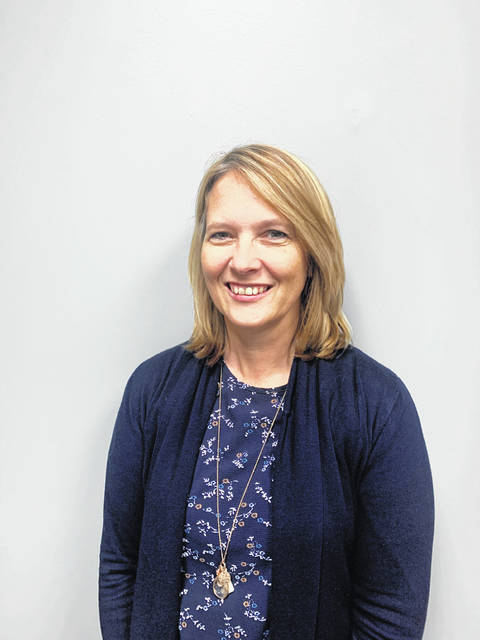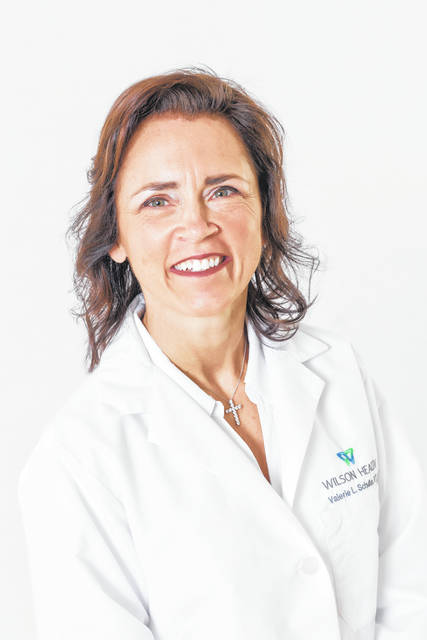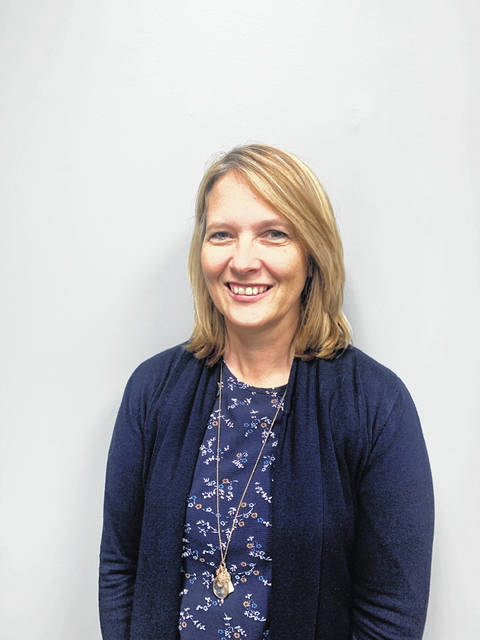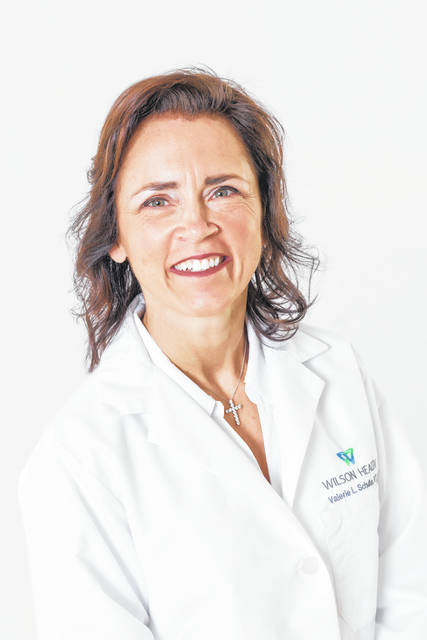



SIDNEY—Elizabeth Obringer opted for a 3D mammogram for a routine follow-up; it’s something she believes saved her life.
“I fall into the percentage of women that have dense breast tissue, which can mask cancer on a 2D mammogram. I did catch it early, and it did not metastasize anywhere. It was in one location, no lymph node involvement. No lump, no pain. It was found on a routine mammogram. I had no symptoms. The radioloist stated that a year from now, I would be on a different path if I didn’t find the cancer as soon as I did,” Obringer said.
Obringer, the clinical manager of the Wilson Health Family Birth Center, was diagnosed with two areas of Ductal Cell Carcinoma on Jan. 5, 2017. During her biopsy and before she heard the results out loud, she found herself in denial, rationalizing that she was a healthy, young and active woman working as a nurse.
“I thought this doesn’t happen to me — I was too young to have to worry about cancer,” Obringer said. “It wasn’t until I walked into the consultation room and saw how the chairs were lined up for a discussion that I felt it was real.”
Describing herself as the type of person who looks at her options moving forward and the next steps in an effort to get something done, but found that her next questions were concern for how she would tell her daughters, her friends, her family, and wondering how they would handle the news. For Obringer, that was more difficult than hearing the results at the time. After going back to work and taking time to process the news, she began treatment, which involved surgery to remove the cancer and radiation treatments after surgery. Along with this, she had mammograms every six months for two years. She is back on her annual cycle with no evidence of further disease, and is nearly three years out from her diagnosis. Today, she is cancer free, and shares her story to help empower other women and give them the courage to get regular check-ups and mammograms.
“If cancer can happen to me, it can happen to anyone. It isn’t always genetic; it isn’t always the person you would expect,” Obringer said. “Women so often take care of everyone else, but we can’t take care of anyone if we’re not here.”
While Obringer didn’t have her initial 3D mammogram that lead to her diagnosis done at Wilson, the hospital does offer the service to local residents who go there for mammograms and check-ups.
“Having 3D mammography technology for our community is instrumental in detecting cancer earlier to help us improve survival rates. With 3D mammography, the radiologist can view more lawyers of the breast tissue, allowing for accurate images, which can help with cancer detection,” Dr. Valerie Schulte, D.O. at Wilson Health, said.
According to Schulte, who has been an OB/GYN for over 14 years now, Ohio ranks No. 7 for breast cancer rates, and Shelby County has a lower age adjusted breast cancer detection rate but higher age adjusted mortality rate. Because 3D mammography has been proven to detect more invasive cancers and can help detect cancer early on, Schulte believes it will be impactful at Wilson. 3D mammography enables the radiologist to view more layers of breast tissue, which allows for accurate images, which can help with cancer detection. Wilson uses the Genius 3D Mammography exam, which detects 20 to 65 percent of more invasive breast cancers as compared to 2D mammograms. Additionally, the Genius exam has a 40 percent reduction in recalls compared to 2D alone.
“This means women who are screened are less likely to be called back for additional views, which not only can help decrease anxiety associated with callbacks but can also eliminate the need for additional and unnecessary radiation exposure,” Schulte said.
2D mammogramy will still be available at Wilson in the event that a woman’s insurance will not pay for the 3D mammogramy or if she would prefer to screen with 2D. As Schulte understands, about 97 percent of insurance plans in the area pay for 3D mammography. The 3D mammography technology at Wilson also offers the new SmartCurve breast stabilization system, featuring a curved compression surface that mirrors the shape of a woman’s breast to reduce pinching and allow uniform compression over the entire breast, resulting in a more comfortable mammogram.
Schulte encourages women who have been putting off getting screened in lieu of family, friends, work, and other distractions, to call and schedule a screening.
“To be our best, we must take care of ourselves and that means being on top of annual screenings. If you are to have cancer, you want to ensure they are detected as early as possible, when they are easiest to treat.”



